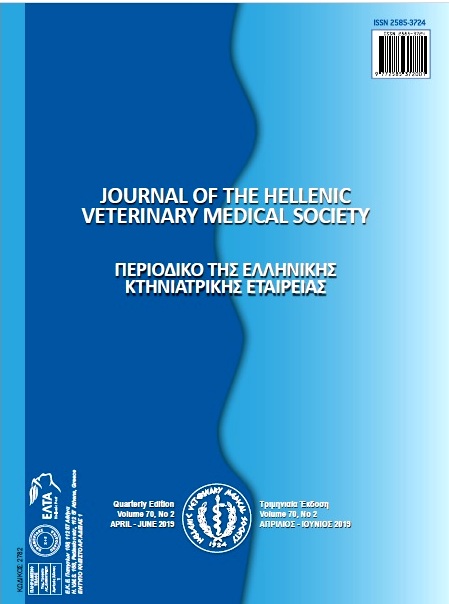Molecular Identification of Vancomycin Resistance and Virulence Genes in Foodborne Enterococci
Abstract
The study was performed to determine the presence of vancomycin phenotyping genes and some virulence traits in enterococci species. For this purpose, a total of 42 enterococci including 6 vancomycin-resistant and 36 vancomycin-susceptible strains originated from meat/meat products and milk/dairy products were assessed for the vanA, vanB and vanC genes and agg, esp, gelE, ace and efaA virulence genes by using polymerase chain reaction or multiplex polymerase chain reaction. The vanA gene was found in 12% (n=5) of the strains and vanC gene in 50% (n=21). From these, three vanA- (E. faecalis, E. durans, E. casseliflavus) and two vanC-positive (E. durans) strains had a minimum inhibitory concentration of > 256 μg/ml as previously determined with the E-test. The strains expressing vancomycin susceptibility originating from ready-to-eat food were found to carry vanA (n=1) and vanC (n=5) genes. On the other hand, the vanB gene was not detected among strains. Moreover, no strain was found to harbor virulence traits studied. Our results indicated that resistant or susceptible enterococci from foods of animal origin can be a possible reservoir for resistance genes and may have a potential role for transfer of genetic elements among enterococci or to other bacteria. Furthermore, to develop epidemiological surveillance systems for foodborne antibiotic resistant pathogens as vancomycin-resistant enterococci and their genes responsible for resistance, primarily vanA, vanB, continues to be an essential issue all around the world. The present work provides data for foodborne enterococci isolates harboring vanA gene from Turkey.
Article Details
- How to Cite
-
MUS, T. E., CETINKAYA, F., CIBIK, R., DEGIRMENCI, G., & DILER, F. B. (2019). Molecular Identification of Vancomycin Resistance and Virulence Genes in Foodborne Enterococci. Journal of the Hellenic Veterinary Medical Society, 70(2), 1487–1494. https://doi.org/10.12681/jhvms.20819
- Issue
- Vol. 70 No. 2 (2019)
- Section
- Research Articles

This work is licensed under a Creative Commons Attribution-NonCommercial 4.0 International License.
Authors who publish with this journal agree to the following terms:
· Authors retain copyright and grant the journal right of first publication with the work simultaneously licensed under a Creative Commons Attribution Non-Commercial License that allows others to share the work with an acknowledgement of the work's authorship and initial publication in this journal.
· Authors are able to enter into separate, additional contractual arrangements for the non-exclusive distribution of the journal's published version of the work (e.g. post it to an institutional repository or publish it in a book), with an acknowledgement of its initial publication in this journal.
· Authors are permitted and encouraged to post their work online (preferably in institutional repositories or on their website) prior to and during the submission process, as it can lead to productive exchanges, as well as earlier and greater citation of published work.



